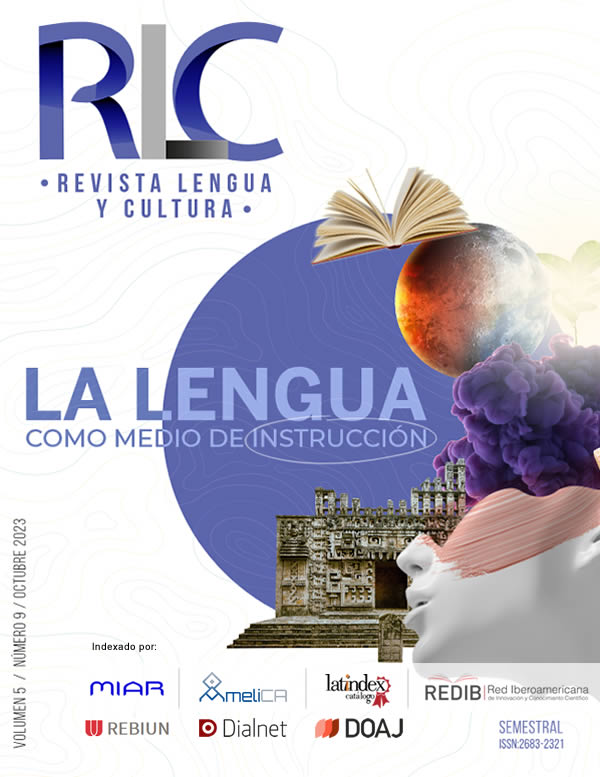ELT inclusion of learners with SENs
Teacher’s beliefs towards visual impairment students’ English learning opportunities in mainstream classrooms
Abstract
Inclusion has been a topic of conversation in recent years since the need to integrate all students equally in ordinary classrooms has caused this boom in the educational community. In the context of English language teaching, teachers sometimes happen to have students with visual impairment. This disability has a negative impact English because it does not allow students to complete learning activities in the same way the rest of the students would. Therefore, this study focuses on visual impairment, and its objective is to explore what teachers' beliefs are regarding the opportunities for students with visual impairment to learn English and their inclusion in their classrooms. Data was collected through interviews, gathering comprehensive information about participants' beliefs regarding the English learning opportunities of these students and their inclusion within their classes. Data analysis was performed by coding interview responses and identifying specific patterns that were related to research questions that might be useful for the study. The study shows that there is insufficient information and training for teachers so there is a need to deeply understand their own beliefs to act wisely, strengthen inclusion, continue to provide the same opportunities and consolidate the way teachers interact with students with visual impairments. on learning
Downloads
References
Abbas, P. G., & Narjes, B.S. (2017). Teachers’ beliefs in English Language Teaching and Learning: A review of the literature. Department of Linguistics, Payame Noor University, Tehran, Iran. doi: 10.5539/elt.v10n4p78
Aryanti, W. (2014). Difficulties in learning English faced by visually impaired students at Center of Language Development (P2B) in State Islamic University (UIN) Sunan Kalijaga. Journal of Disability Studies INKLUSI, 1(2), 189-206. https://doi.org/10.14421/ijds.010204
Başaran, S. (2012). Teaching English to visually impaired students in Turkey: A case study. Energy Education Science and Technology Part B: Social and Educational Studies, 2(217-226), 10. https://www.researchgate.net/profile/Sueleyman-Basaran/publication/281780906_Teaching_English_to_visually_impaired_students_in_Turkey_A_case_study/links/55f81cf708aec948c4782f98/Teaching-English-to-visually-impaired-students-in-Turkey-A-case-study.pdf.
Belay, M. A. & Yihun, S. G. (2020). The challenges and opportunities of visually impaired students in inclusive education: The case of Bedlu. Journal of Pedagogical Research, 4(2), 112-124.
Brown, C. M., Packer, T. L., & Passmore, A. (2013). Adequacy of the regular early education classroom environment for students with visual impairment. Journal of Special Education.; 46(4):223-232 https://doi.org/10.1177/0022466910397374
Cambridge University Press. (n.d.). Belief. In Cambridge dictionary. Retrieved July 31, 2023 from https://dictionary.cambridge.org/us/dictionary/english/upcycling.
Corn, A. L, & Lusk, K. E., (2010). Perspectives on low vision. In A.L. Corn & J.N. Erin (Eds.), Foundations of low vision: Clinical and functional perspectives (2nd ed.) (pp. 3-34). New York, New York: AFB Press.
Creswell, J. W., & Creswell, J. D. (2018). Research design: Qualitative, quantitative, and mixed methods approaches (3rd ed., pp. 40-61). Los Angeles, United States: SAGE Publications.
Delaney, M. (n.d.). Teaching English to learners with Special Educational Needs (SENs) – Myths and realities. British Council. Retrieved March 31st, 2023 from https://www.teachingenglish.org.uk/professional-development/teachers/inclusive-practices/articles/teaching-english-learners-special.
Ertmer, P., Anne, O.-L., & Tondeur, J. (2015). Teacher beliefs and uses of technology to support 21st century teaching and learning. In International handbook of research on teachers’ beliefs (pp. 403–419). New York, NY, USA: Routledge.
Fichten, C.S., Goodrick, G., Tagalakis, V., Amsel, R., & Libman, E. (1990). Getting along in college: Recommendations for college students with disabilities and their professors. Rehabilitation Counseling Bulletin, 34(2), 103-125.
Foreman, P. (2008). Inclusion in action (2nd ed.). Melbourne, Australia: Thomson.
Individuals with Disabilities Education Improvement Act (IDEIA). (2004). Amendments to Public Law No. 108-446, 602, USC 1401. http://idea.ed.gov/download/statute.html
INEGI. (n.d.). Banco de indicadores. Retrieved from: https://www.inegi.org.mx/app/indicadores/21-270&ag 00 D270-D620024 0321-D6200205280/D62071296-40/D6200205280 D6200240450-D6200 205280.
Jorgensen, R., Grootenboer, P., Niesche, R. & Lerman, S. (2010). Challenges for teacher education: the mismatch between beliefs and practice in remote Indigenous contexts. Asia-Pacific Journal of Teacher Education, 38:2, 161-175, http://DOI:10.1080/13598661003677580
Lane, S. (2022). Challenges of Teaching Large Classes. Retrieved August 17th, 2023 from: https://eduedify.com/challenges-of-teaching-large-classes/#:~:text=Here%20are%20just%20a%20few%20of%20the%20issues,things%20feel%20cramped%20and%20claustrophobic.%20...%20M%C3%A1s%20elementos.
Lowe, R. J. (2016). Special educational needs in English language Teaching: Towards a framework for continuing professional development.
Miyauchi, H. (2020). A systematic review on inclusive education of students with visual impairment. Education sciences, 10(11), 346. MDPI AG. Retrieved from http://dx.doi.org/10.3390/educsci10110346
Morelle, M. (2016). Challenges experienced by learners with visual impairment in two mainstream primary schools in Klerksdorp, Dr. Kenneth Kaunda District [Unpublished masters thesis], University of South Africa. http://hdl.handle.net/10500/23125
Mwakyeja, B. M. (2013). Teaching Students with Visual Impairments in Inclusive Classrooms. A Case Study of One Secondary School in Tanzania. [Master Thesis, University of Oslo]. http://urn.nb.no/URN:NBN:no-37751
Pajares, M. F. (1992). Teachers’ beliefs and educational research: Cleaning up a messy construct. Review of Educational Research, 62 (3), 307–332. doi: 10.3102/00346543062003307.
Pizarro, G., & Cordero, D. (2017). La enseñanza del inglés como segunda lengua a estudiantes universitarios con discapacidad y necesidades educativas especiales: un reto académico. Repertorio Americano, (25), 165-178. https://www.revistas.una.ac.cr/index.php/repertorio/article/view/9400
Ralejoe, M. (2021). A study to understand the inclusion of learners with and without visual impairment in a secondary school in Lesotho. South African Journal of Education, 41(1).
Smith, L., & Southerland, S. (2007). Reforming practice or modifying reforms? Elementary teachers’ response to the tools of reform. Journal of Research in Science Teaching, 44, 396–423. http://doi:10.1002/tea.20165
Special Education Department Communication Disorders and Sensory Impairments (2013). Guidelines for case selection, continuance and dismissal of services for students with visual impairments. Retrieved April 11th, 2023 frm: https://campussuite-storage.s3.amazonaws.com/prod/1558550/996e2c54-539e-11e8-b9a1-0a0344361b00/1937894/bb645c3c-85ea-11e9-94ff-125b907f6c20/file/VisionCriteriaManual.pdf.
Speer, N. M. (2008). Connecting beliefs and practices: A fine-grained analysis of a college mathematics teacher’s collections of beliefs and their relationship to his instructional practices. Cognition and Instruction, 26,218–267. http://doi:10.1080/07370000801980944
Susanto, S. & Nanda, D. S. (2018). Teaching and learning English for visually impaired students: An ethnographic case study. English Review: Journal of English Education 7(1), 83-92. http://doi:10.25134/erjee.v7i1.1530
The University of Pittsburgh Department of Ophthalmology. (n.d.). What is Vision Impairment? Retrieved from: http://ophthalmology.pitt.edu/vision-impairment/what-vision-impairment
UNESCO (2009). Policy Guidelines on Inclusion in Education. Paris: UNESCO.
Wilkins, J. (2008). The relationship among elementary teachers’ content knowledge, attitudes, beliefs, and practices. Journal of Mathematics Teacher Education, 11(2), 139–164. http://doi:10.1007/s10857-007-9068-2
Copyright (c) 2023 Guadalupe P. Noriega-Pérez, Rocío M. Paz-Dominguez, Tomás Hernández-Ángeles, Martha G. Hernández-Alvarado

This work is licensed under a Creative Commons Attribution-NonCommercial-NoDerivatives 4.0 International License.













